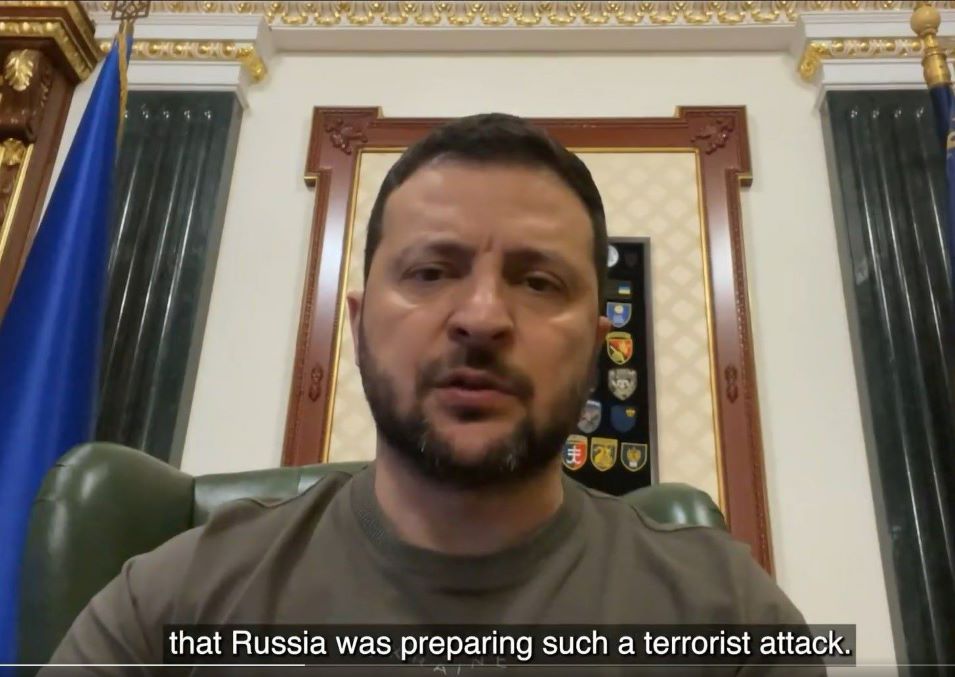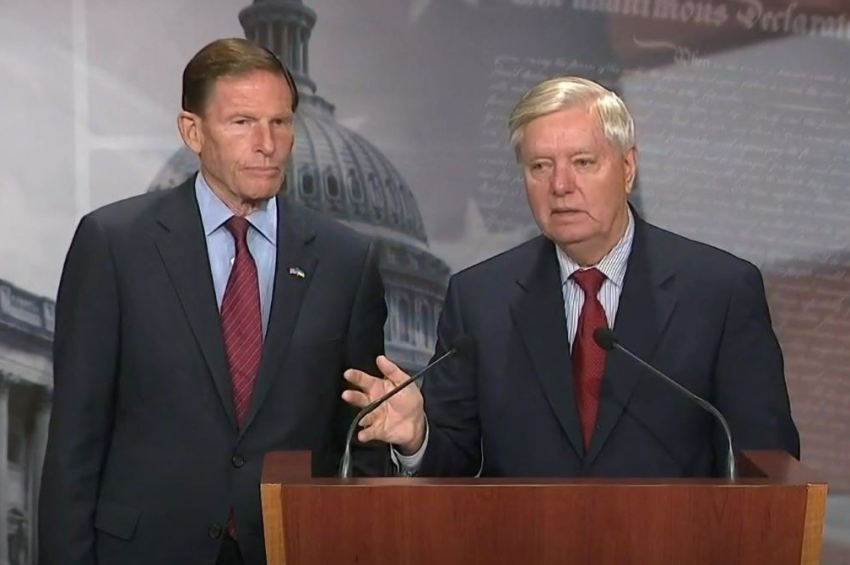[video] US senators propose resolution on Zaporizhia nuclear power plant
Hours after an emotional speech by Ukrainian President Volodimir Zelenski that Russia was plotting a terror attack at the Zaporizhia nuclear power plant, two United States senators held a press conference announcing a move that will certainly bring Russia and NATO into a direct armed conflict – if President Vladimir Putin doesn’t buy it.
Is the nuclear threat real?
President Zelenski published on 22 June a tweet saying that the destruction of the Kakhovka dam was just a prelude to a bigger event and he held intelligence that the Russians were preparing to organize an attack at the Zaporizhia nuclear power plant – which, like the Kakhovka dam is now in their hands – with radiation leakage.
“Intelligence has received information that Russia is considering a scenario of a terrorist attack on the Zaporizhzhia nuclear power plant. A terrorist attack with radiation leakage. They have prepared everything for this. Unfortunately, I have repeatedly had to remind that radiation has no state borders, and who it will hit is determined only by the wind direction.
“We share all available information with our partners – everyone in the world. All the evidence. Europe, America, China, Brazil, India, the Arab world, Africa – all countries, absolutely everyone should know this. International organizations. Everyone. There should never be any terrorist attacks on nuclear power plants anywhere. This time it should not be like with Kakhovka – the world has been warned, so the world can and must act,” Zelenski warned [his quotes are not altered].

President Zelenski warning about the Russian nuclear threat. Credit: Zelenski's Twitter account
On the same day, US Senators Lindsey Graham and Richard Blumenthal introduced a bipartisan resolution declaring Russia's use of nuclear weapons or destruction of the occupied Zaporizhia nuclear power plant in Ukraine to be an attack on NATO, which would require the invocation of NATO Article 5.
“If Russia or Belarus, or a party of Russia, explodes a nuclear device inside Ukraine to stop the counteroffensive or break the will of the Ukrainian people, such an attack should be considered an attack on NATO itself.
A nuclear weapon unleashed in Ukraine would eradiate large portions of Europe where we have NATO allies. And while we’re doing this, President Biden says threat of Putin using tactical nuclear weapons is real,” Graham explained.
Underlining that the threat of a nuclear deflagration in Ukraine is real, he seized a moment to address the elites around the Russian leader: “If you do this, if you follow his orders, you can expect a massive response from NATO and you will be at war with NATO.”
Senator Richard Blumenthal in turn expressed confidence that Ukraine had small but steady progress on the battlefield and Putin could be tempted to use tactical nuclear weapons or – more likely – try to destroy Europe’s largest nuclear power facility.
“This message is for Vladimir Putin and more importantly for his military. They will be destroyed,” he stated.
A similar message was uttered by President Joe Biden in late 2022, warning that NATO would retaliate to a nuclear attack by destroying all Russian conventional forces on Ukrainian soil and in the Black Sea.
More to read:
When Belarus will get nukes and other dragon stories from Putin
The senators urged their colleagues to take a closer look at what can happen in Ukraine and at the “very provocative” transfer of nuclear weapons out of Russia to Belarus.
There’ve been no official reactions from NATO or European allies to the statements made by the two American legislators. Even if the US approves of the resolution with agreement of the legislative and executive powers, it will not be binding unless all members agree.
The US-led organization on 23 June ends a ten-day exercise coded Air Defender in Germany, which involved around 10,000 personnel and 250 aircraft from 25 countries.
While fighting has increased substantially in eastern Ukraine over the last 48 hours, the counteroffensive has been slow. In early June, the Ukrainian army began testing Russian positions with short but fast assaults and artillery fire to find weaknesses in defensive lines behind extensive mine fields, which turned to be stronger than expected. When Ukraine spots the vulnerable areas, its troops will rush into those breaches.
More to read:
[video] How many nuclear warheads does Putin actually have?
The destruction of the Kakhovka dam on 6 June flooded large arears in the Dnipro meadow, creating a huge humanitarian crisis that requires army assistance and making it difficult for advancing troops to cross the river.
President Zelenski believes Putin is determined to blow up the Zaporizhia nuclear plant rather than order an attack with nuclear missiles for the sake of forcing Kiev to halt the counteroffensive and seek peace of the Kremlin’s terms.
The same day, on 22 June, officials from the Department of State and the Department of Defense participated in a Senate hearing on US policy toward NATO and Ukraine ahead of the alliance’s July summit in Vilnius, Lithuania.



![[video] Navalny team released photographs of another “Putin palace” — in Crimea](/news_img/2025/12/30/news1_mediu.jpg)



